Medicinal Plants, Colonial Weeds, and Biodiversity Loss an article about this series on The Collation, a Folger Shakespeare Library blog.
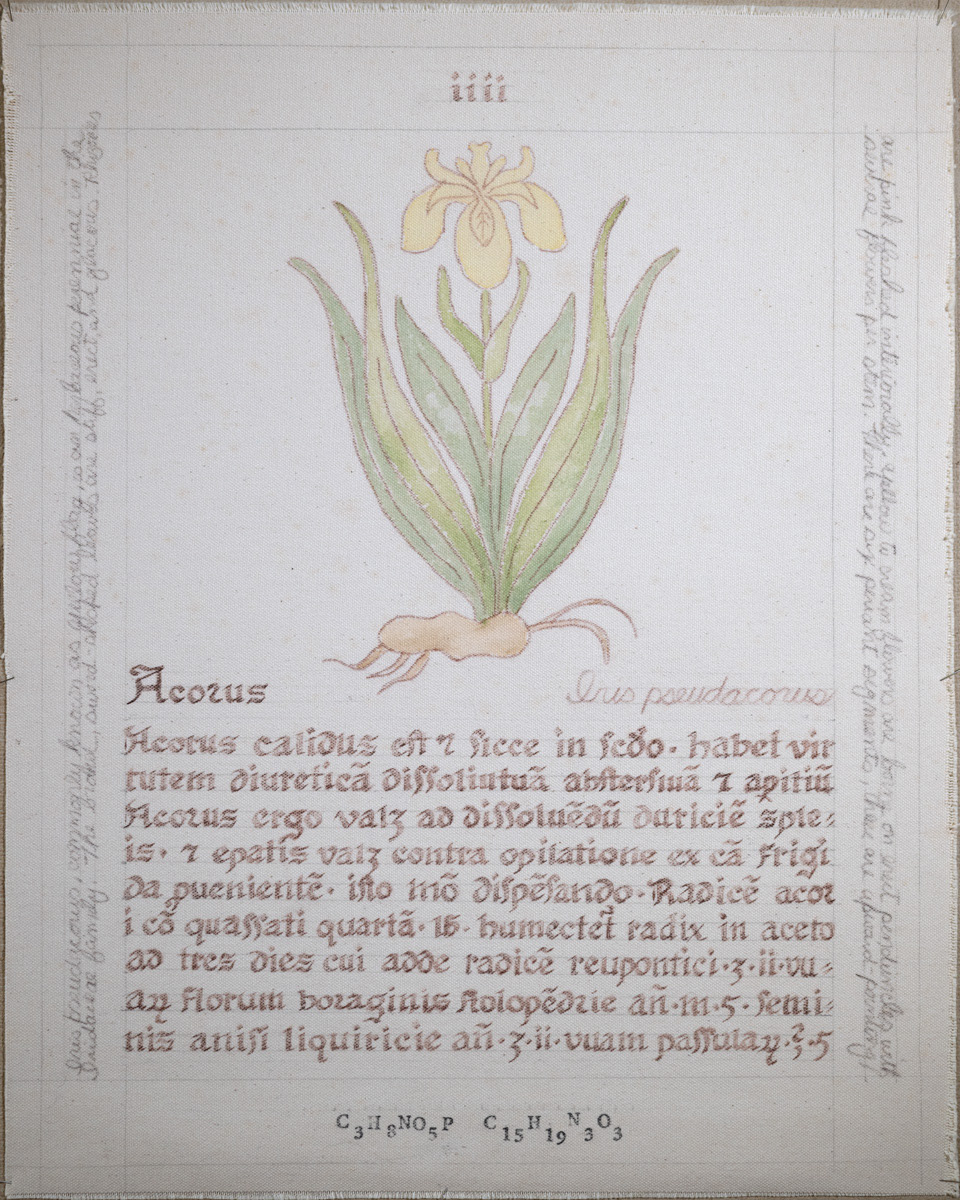
Acorus: Iris pseudacorus
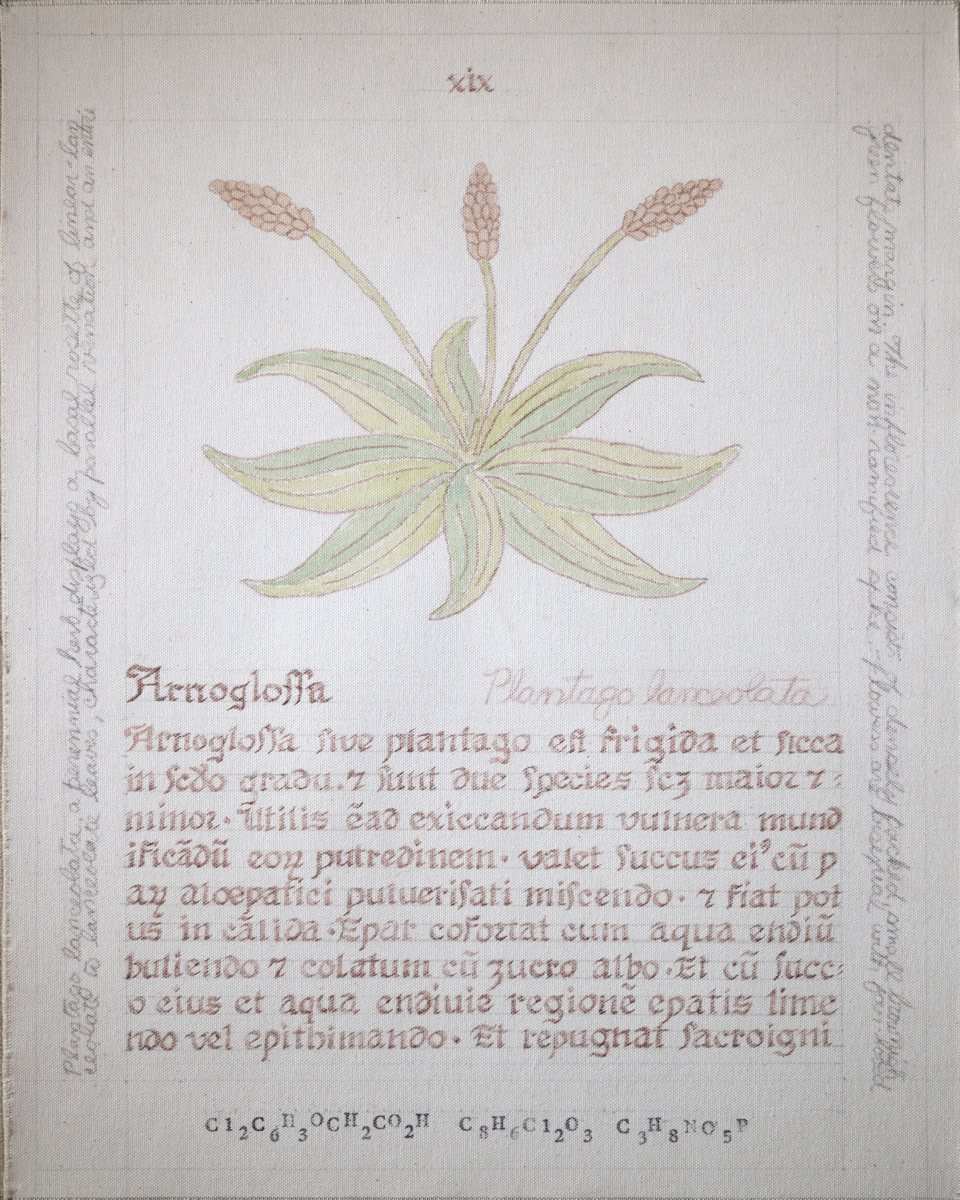
Arnoglossa: Plantago lanceolata
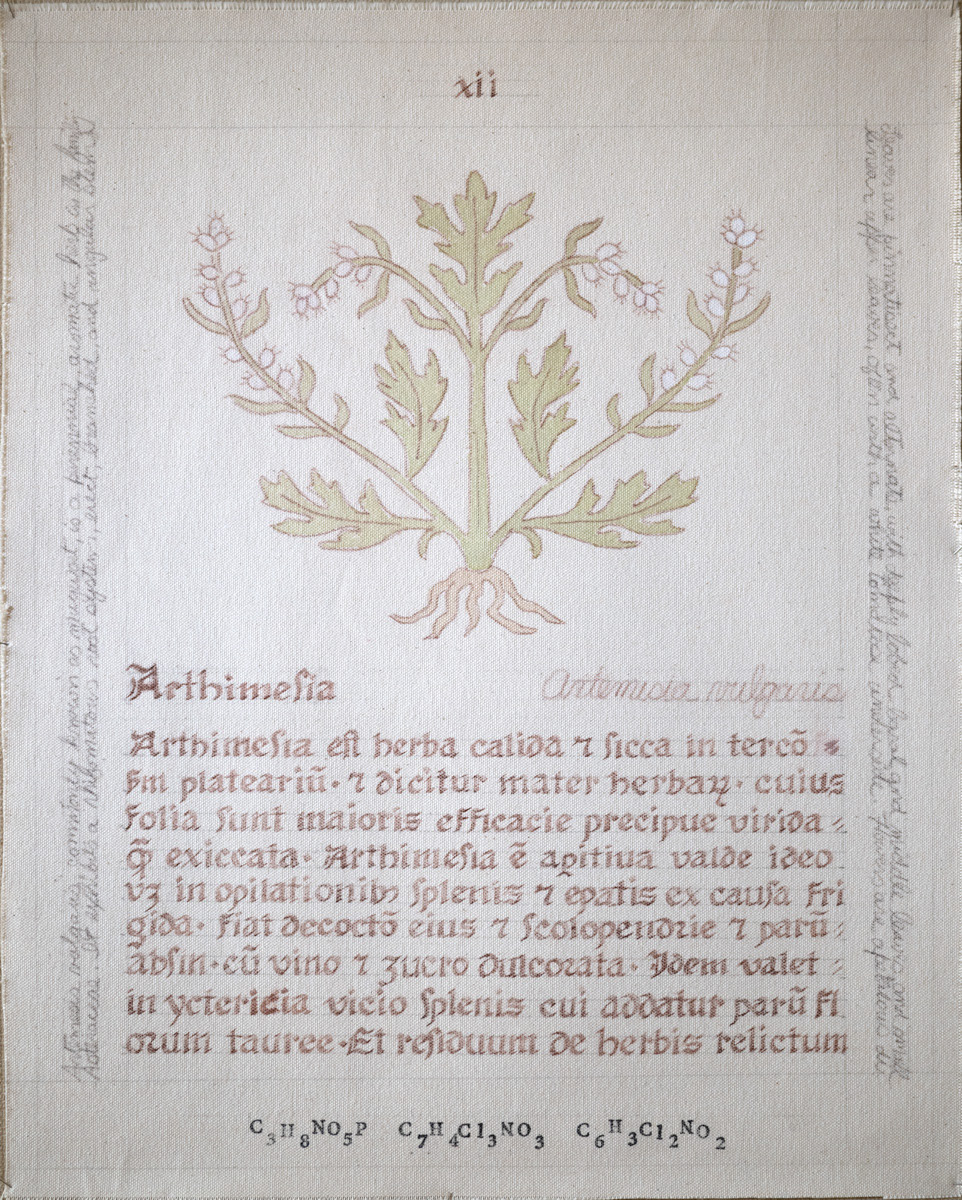
Arthimesia: Artemesia vulgaris
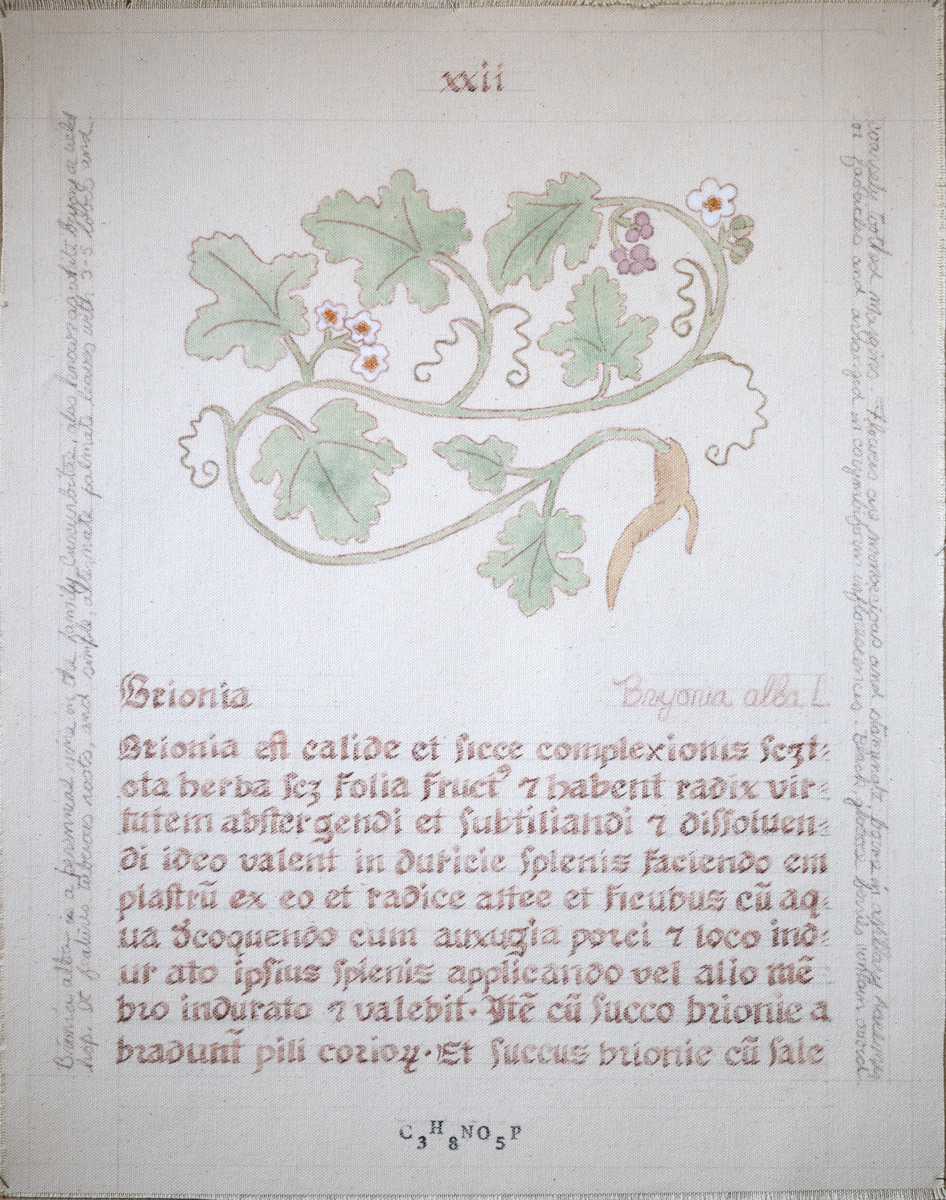
Brionna: Bryonia alba L.
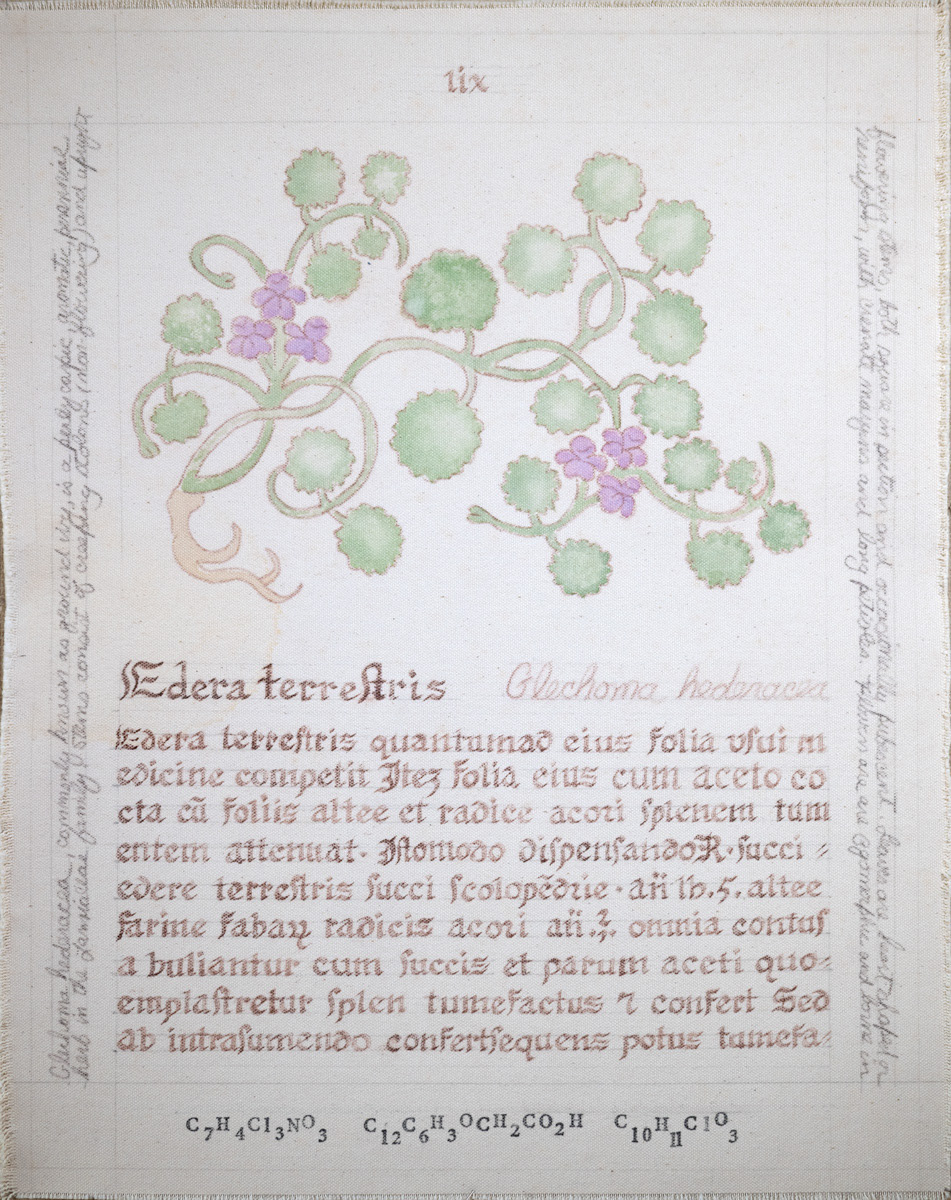
Edera terrestris: Glechoma hederacea

Iusquiamus: Hyocyamus niger
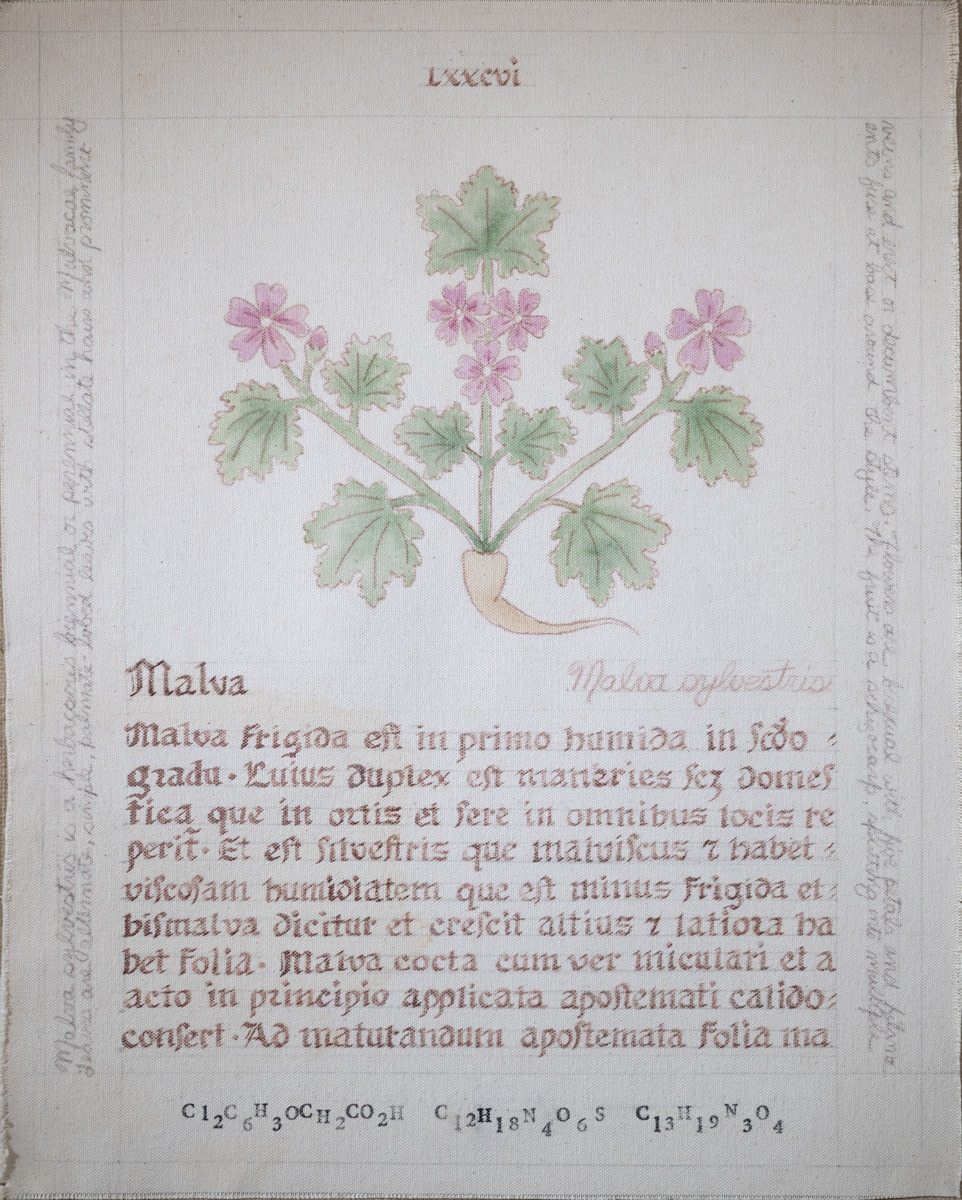
Malva: Malva sylvestris
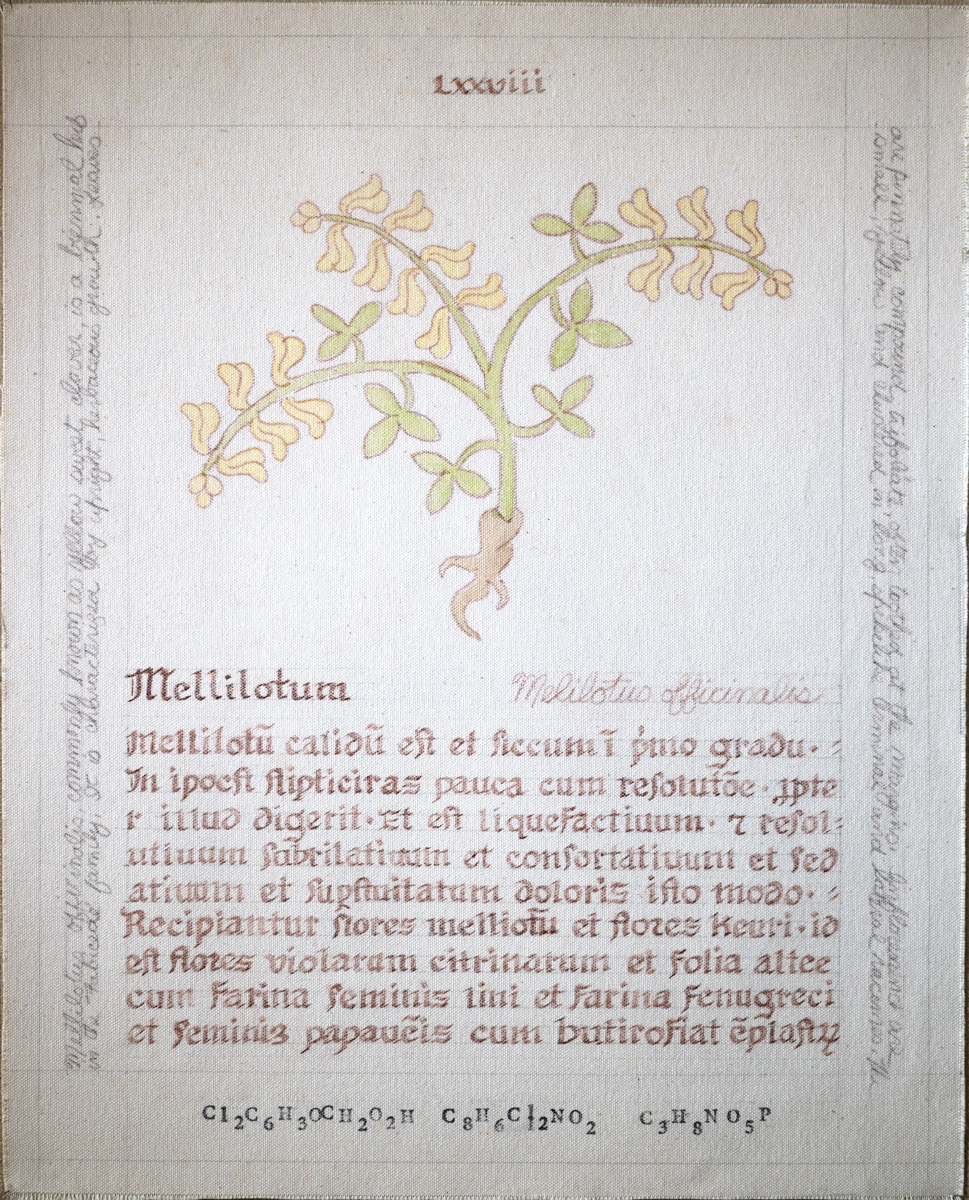
Mellilotum: Melilotus officinalis
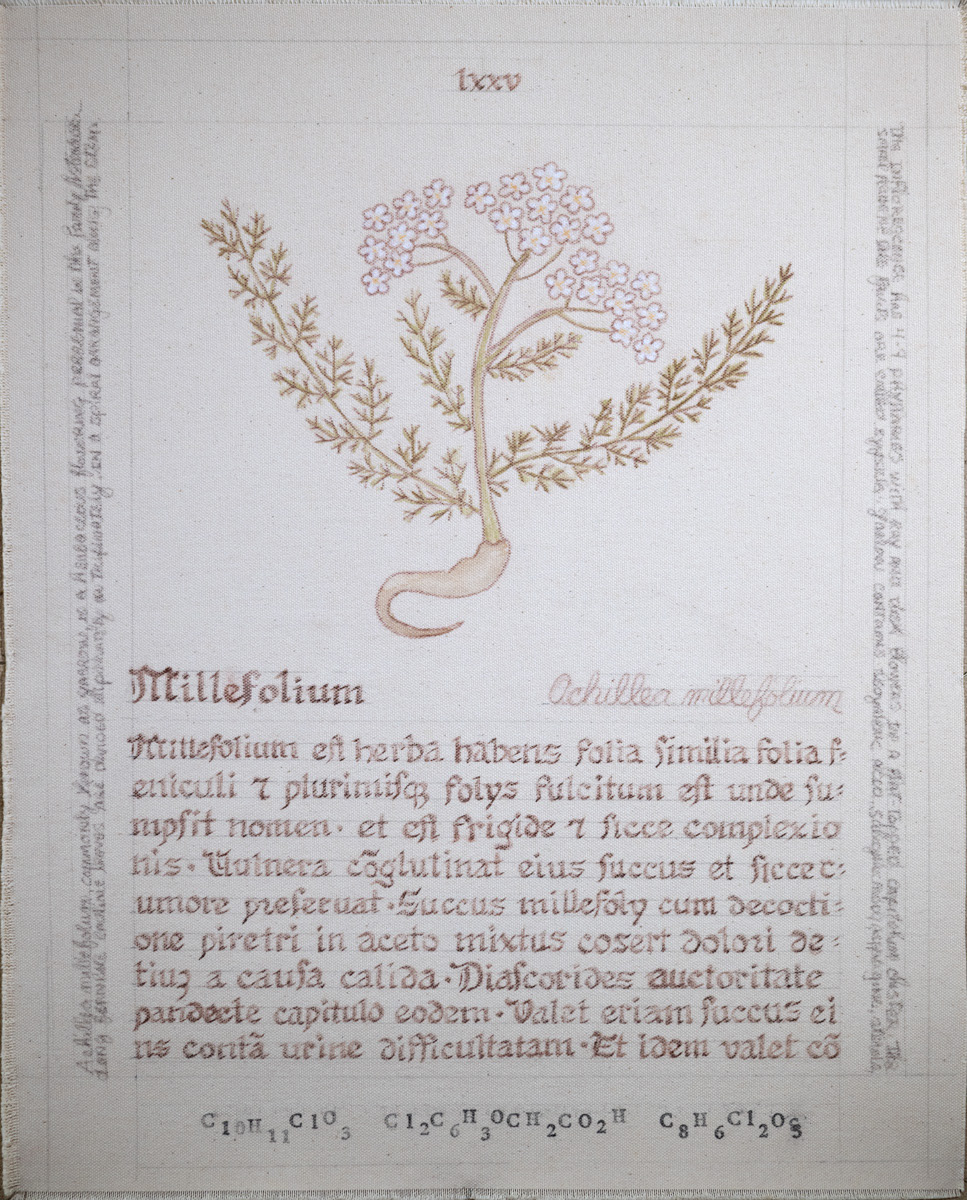
Millefolium: Achillea millefolium

Viola: viola odorata, viola spp.
About this series
Herbarius Rewilded: From Medicinal Herbs to Modern Weeds is a series of mixed-media paintings that reimagines a 15th-century book of medicinal herbs as a witness to the ecological transformations driving 21st-century biodiversity decline. The series is modeled on the 1484 Herbarius Latinus, published before widespread habitat loss caused by monoculture plantations and the intercontinental exchange of plants, animals, and pathogens.
These traditional medicinal herbs, now categorized as weeds, carry a story of migration, ecological disruption, and resilience, told through plants initially transported around the world by colonial settlers for their “physic gardens”. My research revealed that more than one-third of the plants in the Herbarius Latinus currently appear in invasive-species databases. Whether invasive or merely bothersome, these weeds thrive in human-disturbed habitats and are actively suppressed. The widespread use of toxic chemicals to control these plants in agriculture, public green spaces, and private gardens causes cumulative damage throughout entire ecosystems—from microbes to mammals.
Each painting in this series functions as a page in a deconstructed manuscript. My illustrations are inspired by the medieval stylistic qualities of the original woodblocks: symmetry, symbolism and simplicity of form. I copy excerpts from the Herbarius Latinus text using brush and ink calligraphy, and write botanical terminology as marginalia along the vertical borders. The chemical formulae of herbicides recommended to eradicate each species decorate the lower borders. This layered visual language contrasts the historical value of these plants with their present-day status as weeds, and underscores both the resilience and fragility of contemporary ecosystems.
By focusing on weeds, I highlight the interconnection and value of all species, as ongoing habitat loss, chemical inputs and climate change accelerate the global biodiversity crisis.
This series supported through an Artist Research Fellowship at the Folger Shakespeare Library, Washington, DC.